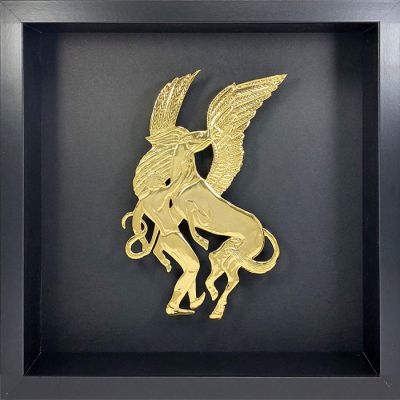Vellerefontes taming Pegasus. In Ancient Greek mythology Vellerofontes was the greatest hero and slayer of monsters like Cadmus and Perseus before the time of Heracles. Vellerefontes tamed Pegasus with the help of Goddess Athena. The design is from decoration painted on ancient vases. It is handmade of gold-plated 24k copper, placed in wooden frame.
Dimensions: 27 cm x 27 cm x 6 cm
You may also like to see our frame collection.
All prices include VAT.
*All our products are sent in a gift box and are accompanied by a description of the find in Greek and English, and by a guarantee from our workshops.
Corinth minted staters around the middle of the 6th century. BC, which reflected its commercial and economic development. The circulation of the first Corinthian staters was locally limited. However, they were found in "treasures" in her colonies in Greater Greece, which indicates that they were wide spread.
The coin production of Corinth had a spectacular increase at the beginning of the 4th century. e.g. Corinthian coins are inspired by mythology and local history as in many cities in Greece. Pegasus was the winged horse tamed by the Corinthian hero Vellerephontes with the help of the Goddess Athena. Pegasus is depicted on the one side of the coin. Their ancient name was "poles" (polo=horse in Greek).
Around the end of the 6th c. BC, the head of Athena Chalinitis was established on other side of the coin.









